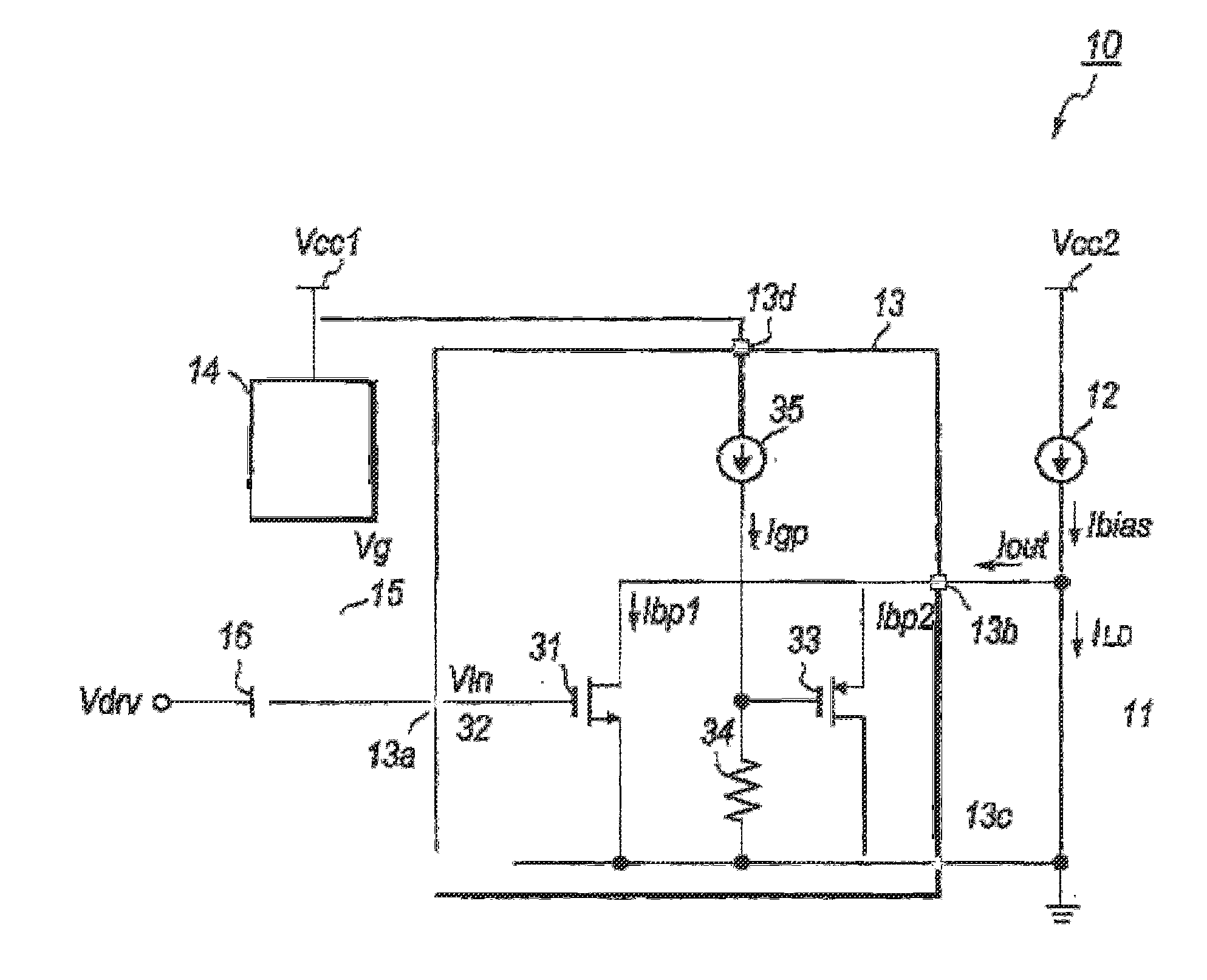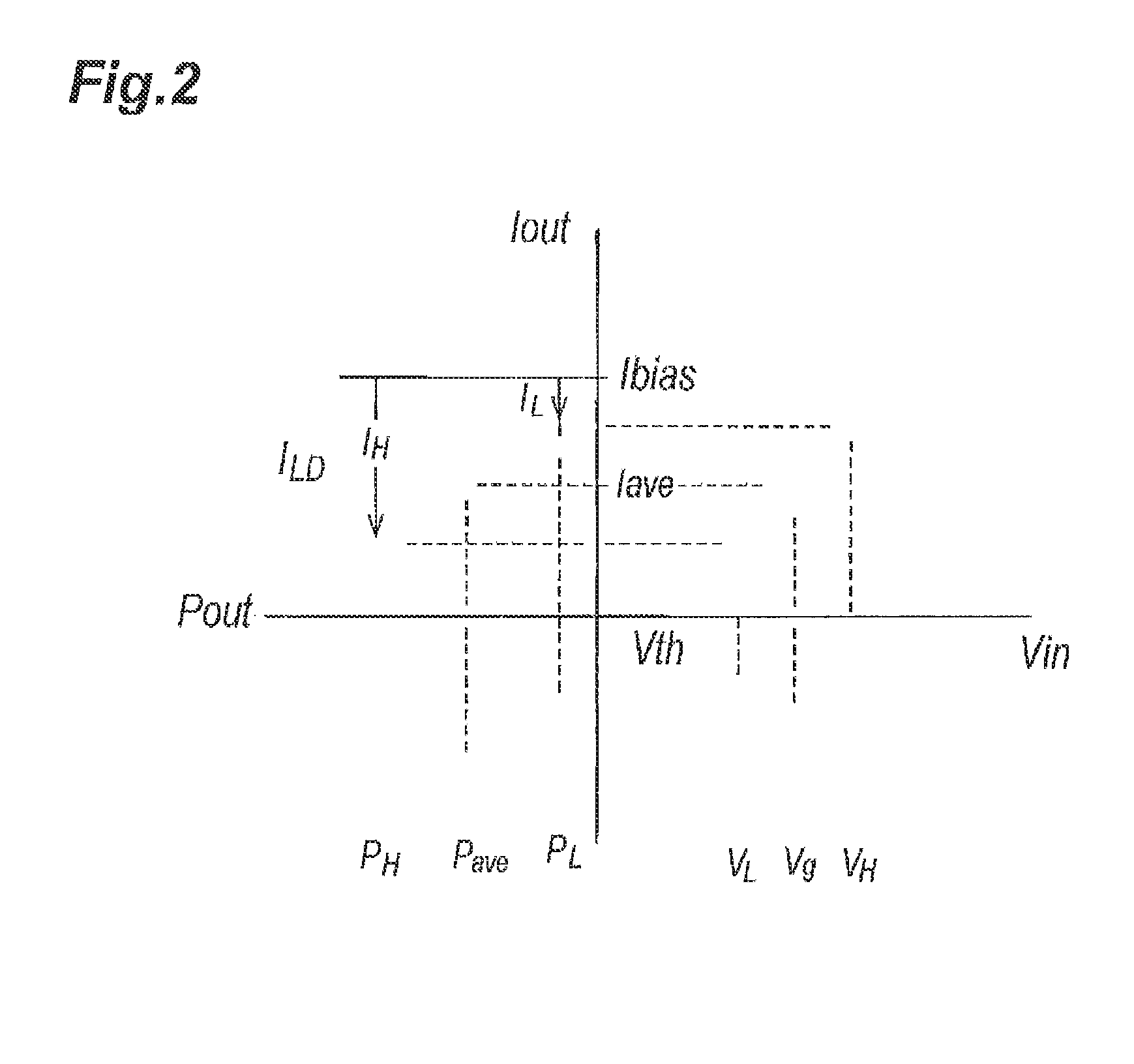Optical transmitter suppressing excess emission of laser diode
a laser diode and optical transmitter technology, applied in the direction of laser output parameters control, semiconductor lasers, electrical apparatus, etc., can solve the problem of excessive ld emission, and achieve the effect of bias curren
- Summary
- Abstract
- Description
- Claims
- Application Information
AI Technical Summary
Benefits of technology
Problems solved by technology
Method used
Image
Examples
first embodiment
[0014]FIG. 1 shows a circuit diagram of an optical transmitter of the first embodiment. The optical transmitter 10, which is a type of what is called as the shunt-driver, primarily includes an LD 11, a first current source 12, a driver 13, a voltage source 14, an inductor 15, and a capacitor 16.
[0015]The LD 11, which is a type of semiconductor laser diode, generates an optical signal responding the driving current ILD provided thereto. An anode of the LD 11 couples with the first current source 12 and an output terminal 13b of the driver 13; while, a cathode thereof is directly connected to the ground GND. The LD 11 emits light provided with the driving current ILD derived from a bias current Ibias from the first current source 12, which generates a forward voltage Vf of about 1.3 V. The first current source 12 generates, powered by the second power supply Vcc2, the bias current Ibias to the LD 11, where the bias current Ibias is generally about 50 to 60 mA. The first current source...
second embodiment
[0039]FIG. 4 is a circuit diagram of another optical transmitter 10A having distinguishable features of providing a driver 13A modified from the aforementioned driver 13 and an inductor 17 connected in series to the LD 11.
[0040]The inductor 17 is put between the first current source 12 and the LD 11; while, the modified driver 13A provides a current terminal 13e. That is, the driver 13A provides the second transistor 33 type of the p-MOSFET whose source is connected to the current terminal 13e not the output terminal 13b as that of the first embodiment. The output terminal 13b of the driver 13 is connected to the anode of the LD 11 and a downstream terminal of the inductor 17; while, the current terminal 13e is connected to an upstream terminal of the inductor 17. That is, the inductor 17 is put between the current terminal 13e and the output terminal 13b of the driver 13.
[0041]The operation of the optical transmitter 10A is the same with that of the aforementioned optical transmitt...
PUM
 Login to View More
Login to View More Abstract
Description
Claims
Application Information
 Login to View More
Login to View More - R&D
- Intellectual Property
- Life Sciences
- Materials
- Tech Scout
- Unparalleled Data Quality
- Higher Quality Content
- 60% Fewer Hallucinations
Browse by: Latest US Patents, China's latest patents, Technical Efficacy Thesaurus, Application Domain, Technology Topic, Popular Technical Reports.
© 2025 PatSnap. All rights reserved.Legal|Privacy policy|Modern Slavery Act Transparency Statement|Sitemap|About US| Contact US: help@patsnap.com



